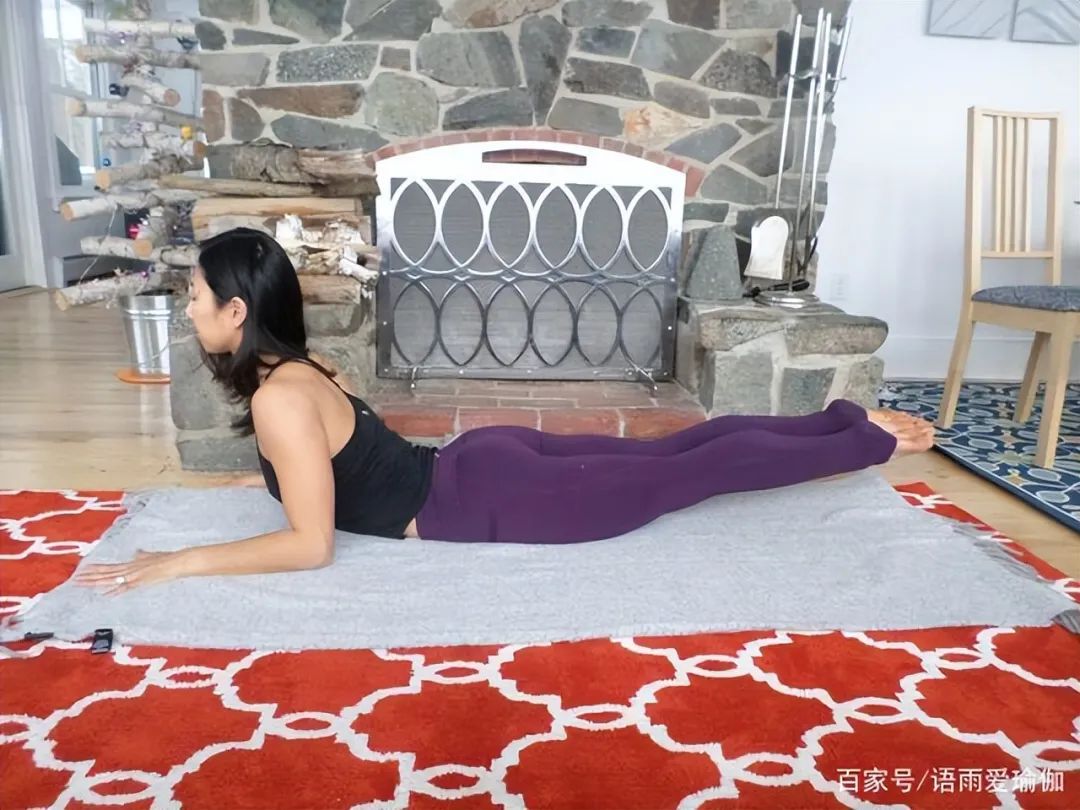Locust pose is often overlooked because of deeper backward bending positions such as camel pose and pigeon pose.

If you often practice locust pose or want to add this pose to your practice, you need to learn the right way to lay a solid foundation in locust pose.

Next, we’ll break it down to get a deeper understanding of asanas.

Head: in the final variant, the chin is parallel to the floor.

When strengthening the spine, please comfortably look down at the nose, keep the neck in line with the shoulders, and keep the fist distance between the chin and the neck.

Shoulder: lengthen the anterior deltoid and extend the shoulder blades to the hips to lift the shoulders off the ground.

The clavicle is separated to help open the chest forward and create a backward bend.

Lift the torso, concentrate the body weight on the abdomen and strengthen the diaphragm.

Chest: because internal organ compression will increase intra-abdominal pressure and diaphragm resistance.

When your weight is on your abdomen, the rectus abdominis and transverse abdominis cannot rest.

They need to stay focused to protect their lower back and lumbar spine.

Hips: extend your hips to help lift your legs.

Gluteal muscles are activated to pull the pelvis back and down to help expand the pubis.

Hand foot participation helps to focus all movements of the legs and hips, stretch the spine and protect the lower lumbar spine.
Legs: hips are the power to lift legs.
However, focus on the outer leg (especially the tensor fascia) to rotate the leg inward and keep the knee in a neutral position facing down towards the ground.
When lifting the leg, the knee can bend until the last minute, when the knee will extend to complete the pose.
Feet: the activation of the feet can help lift the legs.
Put your toes together and bend your ankles slightly so that the soles of your feet are parallel to the floor.
Let’s enter exercise 1 in the following ways Little cobra in little Cobra pose, you will begin to strengthen the anterior deltoid and strengthen the upper spine.
In this preparation position, focus on activating the rectus abdominis and transverse abdominis to enhance the strength of the diaphragm.
2.
Lift your legs, relax your upper body, focus on the pubis, and lift your legs at the same time.
This is the best way to squeeze the leg from the inner thigh to the inner arch of the foot.
3.
The upper leg lift in Sphinx focuses on unfolding the clavicle and reaching down the body to the shoulder blades of the pelvis.
Working with the leg lift while still supporting the body with the arm helps isolate the movement and focus on the integrity of the leg lift.
4.
Locust lie prone on the cushion surface, put your hands on both sides of your body, keep your feet shoulder width apart, inhale and extend your spine, exhale and lift your legs back and up at the same time.
Pay attention to lifting the legs up from the root of the thighs instead of the feet.
Use the strength of the back to open the chest, extend the front side of the body, keep the shoulder blades back and down, and keep the shoulders away from the ears.
Keep breathing evenly for 5 times, or just breathe comfortably, without excessive tension in the neck and lower back.
Beginners can also practice with AIDS, yoga bricks, chairs, yoga belts and pillows.
The locust pose is a soft backward bend, which requires full body extension and strength.
These are all exercises that need persistence and repetition…

